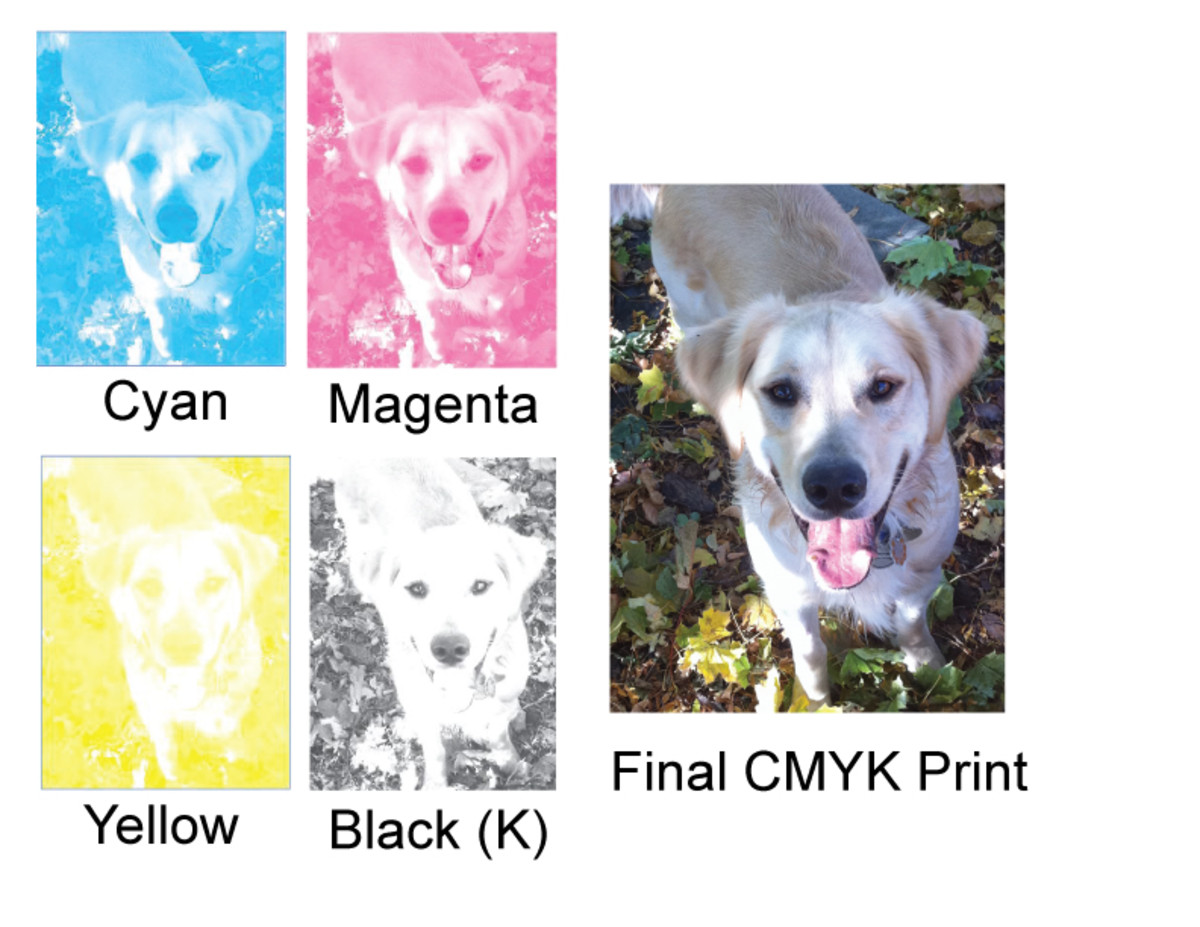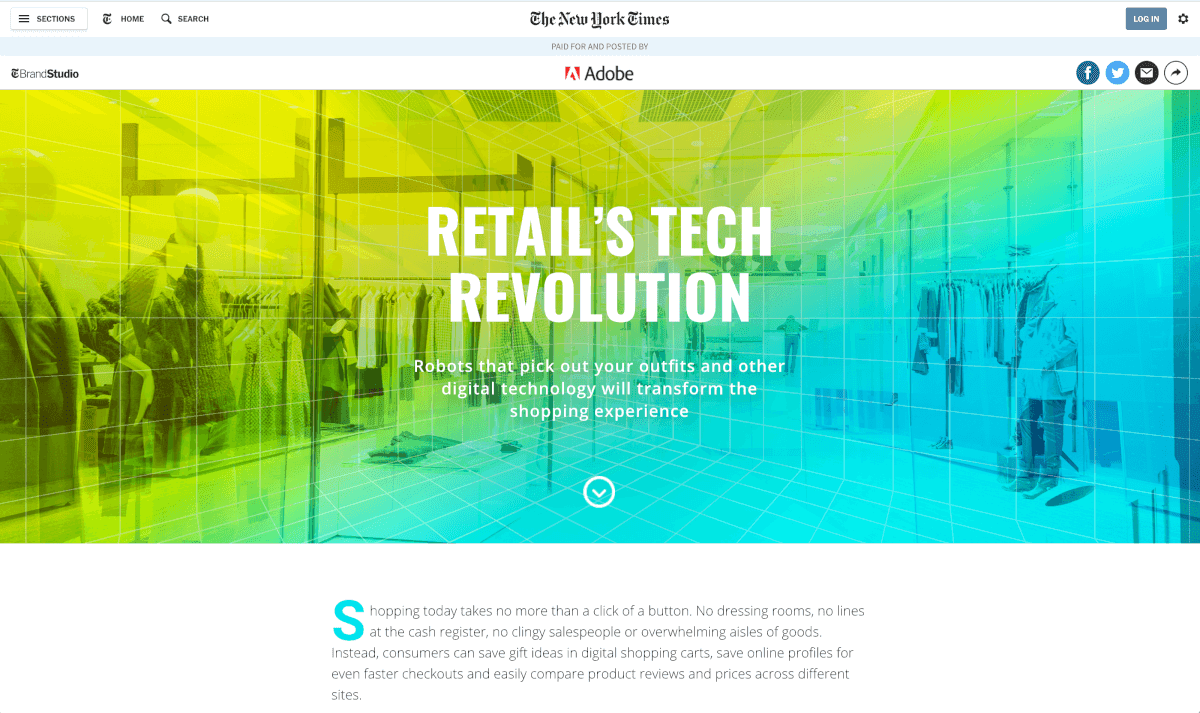How to Write a Real Estate or Property Business Proposal

I can show you how to make your pitch...
I started writing business proposals over a decade ago and turned that practice into an easy to follow system and set of packages for anyone to create their proposals. For many years I have specifically helped real estate agents, developers, contractors and other related companies develop their business proposals.
How do you go about writing a real estate industry proposal (such as pitching an investment or managing a property). You need to articulate what the deal is and who gets what out of it in a very clear and structured format. While there are countless ways to write a pitch, they all follow a similar structure that is easy to understand.
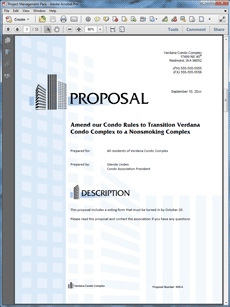
How to write any kind of real estate or property proposal
using my step-by-step guidelines
Many of my clients work in the field of real estate. Some are realtors, some are investors or developers, some are property managers involved in commercial leasing or handling rentals, and some are commercial lenders or work for agencies dealing with housing. Some want to write proposals to apply for government grants to fund low-cost housing or tenant improvement projects. But they all have one thing in common: they all need to write a proposal to make a pitch.
Most of you have written business letters, and maybe even advertising fliers and brochures, so you already have some concept of what business writing is all about. I tell my clients that proposal writing is easier than it might seem, because every proposal has standard sections and a standard structure. In a proposal, you basically introduce your organization; explain the need for your proposal; describe what you're proposing, how your plan provides solutions to needs, and the costs involved; and then convince the boss, investor, prospective client or grant committee that you know what you're talking about.
Your first step in writing any proposal should be to gather information about the party who will judge your proposal. You want to present a proposal customized for that party's specific needs, situation, and knowledge level. So try to imagine yourself in the other party's position. If your proposal is aimed at your boss or the executives in your company, you already understand their concerns and attitudes. But if you are pitching to another organization, then you may need to do a bit of work researching who the decision makers are and what they will be looking for in a proposal. If you are responding to an RFP, then of course you will carefully study the RFP's written requirements.
After you've collected the facts about the party you are pitching to, writing the proposal will come easily. No matter what sort of business you're in or what sort of project you're describing, proposals generally follow a four-part structure: 1) an introduction of yourself and your proposal, 2) a summary of the situation and needs, followed by 3) descriptions of the ideas or the properties or services you are offering, including all the important details and associated costs. Finally, the proposal should conclude with 4) information that will persuade the proposal reader to trust you.
The introduction is the shortest section, with just a Cover Letter and a Title Page. In the Cover Letter, write a brief personal introduction to explain who you are and provide your contact information. Include a website URL if you'd like the reader to go there for more details. The Title Page is exactly what it sounds like: a page with a title that states what you are pitching. Some examples might be "Proposal to Convert Winegartt Apartments to Condominiums", "New Leases Available in the Smithwell Building", "Property Management Proposal for the Northwest Mall", "Investment Opportunity in the Running Ridge Development", or "Renter Background Check Services for Property Managers."
My Proposal Kits are also on Amazon - These packages are designed for real estate and property professionals
Or shop direct and download Proposal Packs from ProposalKit.com. These are just a handful of design packages available. I have hundreds more available that will get you started writing your proposal right now.
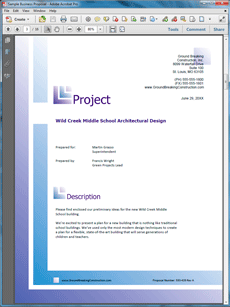
Outline the details of the pitch
Describe all of the details of the proposal
Following the introduction comes the client-centered part of the proposal. Here you'll write topics that demonstrate your understanding of the position and needs of the decision makers. If your proposal is complex, you might want to begin this section with a summary page listing the most important points of your proposal. This is generally called a Client Summary in a fairly casual proposal, or an Executive Summary if your proposal is targeted to corporate clients. Whether or not you use a summary to begin, in this section you should describe the needs, goals, and desires of the client. Don't mention anything about yourself or your ideas yet; keep this section focused on the client.
Next comes the project-centered section. Here, you describe your plan to provide what the client wants. Include all the topics you need to explain your ideas in detail. This section can include almost any sort of information: the pages you select will depend on what you are proposing. For example, if you are proposing the acquisition of a property, you would want to include topics such as Benefits or Cost/Benefit Analysis, Return on Investment, Community, Occupancy, Location Analysis, Amenities, Facilities, and so forth. If you are offering renovation services, you might want to use some of those topics, and add Services Provided and Renovation pages, too, and maybe even insert blueprints to show what you have in mind. Include everything you need to describe your properties, ideas, and/or services, and let the client or grant committee know about the associated costs and benefits.
After you have described your plan, it's time to convince your readers that you can deliver on your promises. The last proposal section should be all about you. Add pages like Our Clients, Experience, Credentials, References, Awards and Achievements, Testimonials, and Company History or About Us. You want to conclude your proposal by persuading your readers that you have credibility and can be trusted.
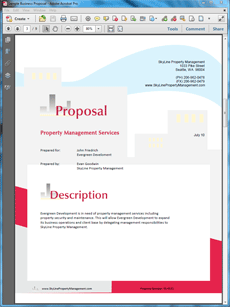
Polish and deliver
Make your proposal look polished and professional before delivery
That's it for writing your proposal-not so hard, is it? But wait-you're still not quite done. Not only do you want your proposal to read well, you also want it look good. You might want to incorporate your company logo, use interesting bullet points and fonts, and put your information on pages with colored borders. Keep the look professional, though. Make sure that the graphic elements match your business style and tone.
Do I really need to say that it's crucial to spell-check and proofread every page? It's always a good plan to use a proofreader who hasn't read your proposal before, because all writers are too close to their own work to spot all the problems.
On to the absolute final step: delivering the proposal. You can print it out, or save the proposal in a PDF file, or both. The best delivery method will depend on your relationship with the other party. For a long-distance client, you could attach a PDF file to an email message or send a printed proposal via a delivery service. If the committee members or clients are close, you might want to impress them by personally handing off a printed and signed proposal.
I hope you can now see how the topic pages in any real-estate-related proposal will vary depending on what you're proposing and the needs of your client, investor, boss, or grant committee. But now that you know that all good business proposals follow a similar structure, I also hope you can envision how to write your own winning proposal.
Another thing I tell proposal writing clients: why start off staring at a blank word processing page? No matter what your proposal is about, you can find all the elements you'll need in Proposal Pack. Its templates contain explanations and examples of information that specific topic pages should contain; you'll never feel stuck wondering what to write.
As well as an extensive library of pre-designed templates, Proposal Pack includes a wide variety of sample proposals, many of which are real-estate-related. There are sample business proposals for real estate property development, property management, property sales, commercial real estate sales, real estate investment proposals, real estate occupancy, and even a sample government grant proposal for the Department of Housing.
Proposal Pack is not just a one-trick pony, either: the product works great for reports, research studies, fliers, letters, and lots of other business documents, too. Yes, you still have to do some writing of your own to flesh out the details, but Proposal Pack will give you great ideas and a big jump start.
One of over 500 Proposal Pack testimonials
I had a very important sales proposal to prepare for a realty firm, and was given only a 1-day notice. I purchased and downloaded a Proposal Pack with a Real Estate design, and it was exactly what I needed. - Kevin Onizuk, Breakwater Mortgage Corp
My Proposal Writing Tools for Real Estate and Property Pros - Examples of proposals created with my system
Most people don't want to start writing a business proposal from nothing. Leveraging tools that provide pre-written documents and samples can save a significant amount of time and reduce errors. I provide all of these completed samples as illustrations in my Proposal Packs to help you get started even faster.
- Property Management Services Proposal
The Real Estate Property Management Services Proposal Sample is an example of the use of the Proposal Kit documents for a property management company offering their services. - Non-Smoking Property Management Sample Proposal
The Non-Smoking Property Management Sample Proposal is an example of a proposal using Proposal Pack to submit pitch to a property to adopt a no smoking policy. - Commercial Real Estate Broker Proposal
The Commercial Real Estate Broker Proposal is an example of a proposal using Proposal Pack to pitch the services of a commercial real estate agent broker to a company seeking new real estate for their business. - Commercial Office Real Estate Lease Proposal
The Commercial Office Real Estate Lease Proposal Sample is an example of the use of the Proposal Kit documents for a business leasing commercial office space. - New Sales Office Sample Proposal
The New Sales Office Sample Proposal is an example of a proposal using Proposal Pack to pitch an internal company proposal for opening a new sales office. - Retail Location Business Plan Sample
The Retail Location Business Plan sample is an example of a business requiring startup funding from a lender to build out and open in a physical office space. - Real Estate Land Development Proposal
The Real Estate Land Development Proposal Sample is an example of the use of the Proposal Kit documents for a real estate land developer. - Real Estate Property Sales Services Proposal
The Real Estate Property Sales Services Proposal Sample is an example of the use of the Proposal Kit documents for an agent offering their services to sell houses for a developer. - Real Estate Investment Funding Proposal
The Real Estate Investment Funding Proposal is an example of a proposal using Proposal Pack to request funding from a lender for investing in commercial real estate. - Commercial Contracting Office Remodel Proposal
The Commercial Contracting Office Remodel Proposal is an example of a proposal using Proposal Pack to pitch general contracting services to remodel a business. - Custom Home Building Proposal
The Custom Home Building Proposal is an example of a proposal using Proposal Pack to pitch the services of a custom home builder to a potential client. - DOH Federal Government Grant Proposal
The US Department of Housing and Urban Development Federal Government Grant Proposal is an example of a proposal using Proposal Pack to respond to a government RFP. - Environmental Program Sample Proposal
The Environmental Green Pilot Program Proposal is an example of a proposal using Proposal Pack to pitch an environmental green pilot program to a community to reduce utility costs through renewable energy use. - Real Estate Occupancy Sample Proposal
The Real Estate Occupancy and Retention Proposal is an example of a proposal using Proposal Pack to pitch a wellness program and community rebranding project to a community to improve occupancy and resident retention. - Architectural Design Sample Proposal
The Architectural Design Sample Proposal is an example of a proposal using Proposal Pack to pitch ideas for a new school building.
Are you in the real estate or property business? Did my lens provide you with the information you were looking for?





